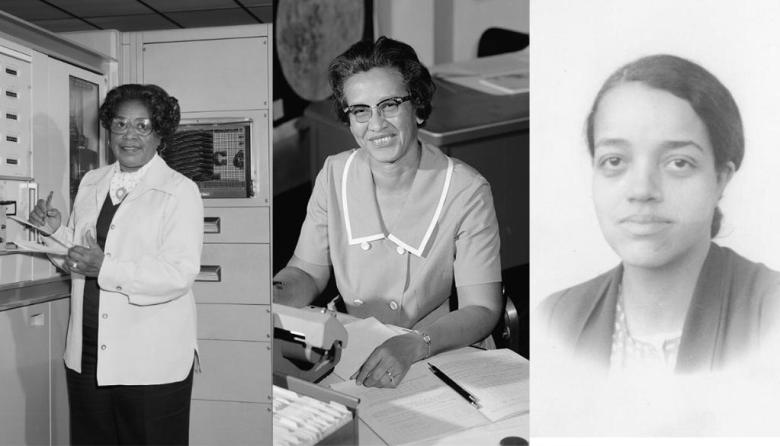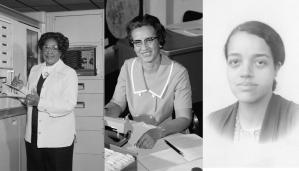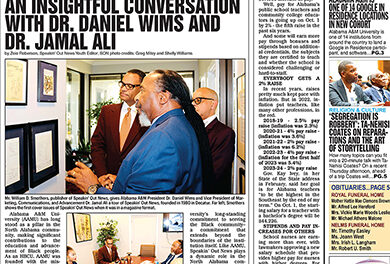

By Megan Sayles
AFRO Business Writer
I can remember the day I went to see “Hidden Figures” in theaters. I was a part of the science, technology, engineering and math (STEM) program at my high school, and one of my teachers offered us extra credit to go see the film.
I was never one to miss out on earning bonus points in a class, so I went to see the movie with a friend just after it was released. Taraji P. Henson led the stellar cast, playing the brilliant Katherine Johnson. Her raw, heart-rending monologue about having to trek half a mile to the nearest colored bathroom is something that sticks with me to this day.
If I’m being honest, I’m not sure I would have gone to see this movie if not for the extra credit opportunity, which would have been an egregious mistake. I would have never learned about the Black women known as human computers who were not just geniuses but trailblazers.
The title of the film underscores the importance of educating today’s generation about the hidden figures. Although they didn’t get the credit they deserved in the past, we can certainly celebrate their accomplishments now.
Katherine Johnson, Dorothy Vaughan and Mary Jackson composed the Hidden Figures. In the mid-1900s, they worked for NASA’s Langley Research Center in the West Area Computing unit, a segregated space for African-American female mathematicians.
In the lab, the West computers, as they were called, were essential in devising astronaut John Glenn’s orbital flight in 1962. As human computers, they were charged with performing mathematical equations and calculations by hand for orbital trajectories.
In spite of the groundbreaking work they were doing, the Black mathematicians were forced to use separate bathrooms and faced restricted access to meetings, according to Smithsonian Magazine. While their White counterparts were allowed to live in federal housing, the Black computers were excluded and left to find their own places to live.
Each of the Hidden Figures had their own unique achievements while working for NASA. Vaughan was hired in 1943 after President Franklin D. Roosevelt signed a law banning discrimination in the public defense industry, according to Astrobites. She became the space agency’s first African-American manager as the supervisor of the West Area Computing Unit, according to NASA.
Jackson, who was previously a math teacher in Maryland, worked for the West Area Computing Unit under Vaughan for two years until she was offered to join a team of NASA engineers in the Supersonic Pressure Tunnel.
Engineer Kazimierz Czarnecki suggested that Jackson enroll in a training program that would lead to a promotion from mathematician to engineer, but because of segregation, she had to get special permission from the City of Hampton to take classes at Hampton High School, according to NASA. In 1958, Jackson became NASA’s first Black female engineer.
Johnson, who tends to be the most well-known of the Hidden Figures, came to work for the West Area Computing Unit in 1953. She worked alongside the engineers who formed the core of the Space Task Group, calculating and analyzing the flight paths of spacecrafts, according to NASA.
Ahead of the 1962 orbital flight, John Glenn specifically requested that Johnson run the numbers and equations that had been programmed into computers to control the trajectory of the space shuttle, according to NASA. He only felt safe to take off after Johnson looked over the numbers.
In 2015, President Barack Obama awarded Johnson with the Presidential Medal of Freedom.
Today, the Hidden Figures serve as early examples of Black women breaking into the STEM workforce. While the industry still lacks diversity, Johnson, Vaughan and Jackson paved the way for future Black female mathematicians, engineers and astrophysicists. The revelation of their contributions has motivated Black women in STEM to fight for representation.
Megan Sayles is the AFRO Business Writer and a Report for America Corps Member.
The opinions on this page are those of the writers and not necessarily those of the AFRO. Send letters to The Afro-American • 145 W. Ostend Street Ste 600, Office #536, Baltimore, MD 21230 or fax to 1-877-570-9297 or e-mail to editor@afro.com
Help us Continue to tell OUR Story and join the AFRO family as a member – subscribers are now members! Join here!
The post The Hidden Figures blazed a trail for greater representation of Black women in STEM appeared first on AFRO American Newspapers .











